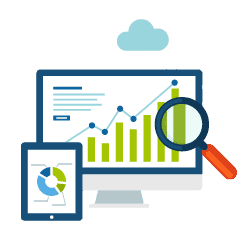Does your website need an update? In today’s digital world, having a website is a necessity for any business. It’s not just about having an online presence, but it’s also about keeping up with the ever-changing technology and trends. If your small business website has not been updated in more than two years, it’s time to take action. In this blog, we will discuss why updating your small business website is crucial and how it can benefit your business.
1. Keep Up With Technology
Technology is advancing at a rapid pace, and if you don’t keep up, your website will become outdated. An outdated website can make your business look unprofessional and unreliable. Customers are more likely to trust a business that has a modern and updated website. Updating your website will not only make it look better, but it will also make it more user-friendly and accessible to your customers.
2. Improve User Experience With A Website Update
Updating your website can improve the user experience for your customers. If your website is not easy to navigate, customers will become frustrated and may leave your website. A well-designed website with clear navigation and relevant information will keep your customers engaged and more likely to stay on your website. Updating your website can also improve the loading speed, which is critical for the user experience. Slow loading speeds can lead to high bounce rates, which means that customers leave your website without exploring further.
3. Mobile Responsiveness
More and more people are accessing the internet through their mobile devices. In fact, mobile devices now account for more than half of all internet traffic. If your website is not mobile-friendly, you are missing out on a significant portion of your potential customers. Updating your website to be mobile-responsive means that your website will adjust to any screen size, making it easier for customers to navigate and use your website.
4. Search Engine Optimization (SEO)
Search Engine Optimization (SEO) is the process of optimizing your website to rank higher in search engine results pages (SERPs). Search engines like Google are continually updating their algorithms to provide the best results for users. If your website has not been updated in more than two years, it may not be optimized for the latest SEO best practices. Updating your website can help improve your search engine rankings, which can lead to more traffic and ultimately more sales.
5. Website Update for Security
Website security is critical, especially for small businesses that may not have the resources to handle a data breach or cyber attack. Updating your website can help ensure that your website is secure and protected against potential threats. Updating your website’s software, plugins, and themes can help patch any security vulnerabilities that may have been present in the older version.
6. Brand Image
Your website is often the first point of contact that potential customers have with your business. An outdated website can make your business look unprofessional and unreliable. On the other hand, an updated website can help enhance your brand image and make your business look more professional and trustworthy. Updating your website with fresh content, modern design, and up-to-date information can help build your brand image and reputation.
In conclusion, updating your small business website is crucial to keeping up with the latest technology and trends, improving user experience, making your website mobile-responsive, improving SEO, enhancing security, and building your brand image. If your website has not been updated in more than two years, it’s time to take action. A well-designed and updated website can help your business stand out in a crowded market and attract more customers.



